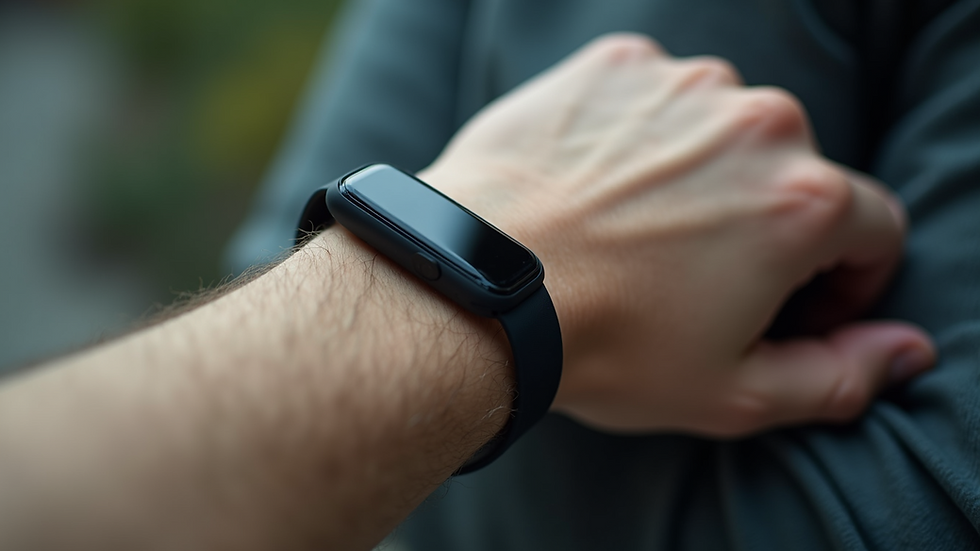How Technology is Transforming Healthcare Operations
- Aug 5
- 4 min read
Technology is reshaping the healthcare industry in profound ways. From improving patient care to streamlining administrative tasks, healthcare IT is at the forefront of this transformation. The integration of advanced technologies into healthcare operations is not just a trend but a necessity to meet the growing demands of modern medicine. This article explores how healthcare IT is revolutionising healthcare operations, offering practical insights and examples.
The Role of Healthcare IT in Modern Medical Facilities
Healthcare IT refers to the use of information technology in the management and delivery of healthcare services. It encompasses electronic health records (EHRs), telemedicine, data analytics, and more. These technologies enable healthcare providers to offer better care, reduce errors, and improve efficiency.
For example, electronic health records allow doctors to access patient histories instantly, reducing the risk of misdiagnosis. Telemedicine platforms enable remote consultations, making healthcare accessible to patients in rural or underserved areas. Data analytics helps identify trends and predict outbreaks, allowing for proactive measures.

The adoption of healthcare IT also supports compliance with regulatory requirements and enhances communication between different departments. This interconnectedness ensures that patient information flows seamlessly, improving coordination and outcomes.
How Healthcare IT Enhances Patient Care and Safety
One of the most significant impacts of healthcare IT is on patient care and safety. Technologies such as computerized physician order entry (CPOE) systems reduce medication errors by automating prescriptions and alerts. Clinical decision support systems (CDSS) provide doctors with evidence-based recommendations, improving diagnosis accuracy.
Wearable health devices and remote monitoring tools allow continuous tracking of vital signs, enabling early detection of potential health issues. This real-time data empowers both patients and healthcare providers to take timely action.
Moreover, healthcare IT facilitates personalised medicine by analysing genetic information and tailoring treatments to individual needs. This approach increases treatment effectiveness and reduces adverse reactions.

Healthcare IT also improves patient engagement through portals where individuals can access their health records, schedule appointments, and communicate with providers. This transparency fosters trust and encourages patients to take an active role in their health management.
What does the IT department do in healthcare?
The IT department in healthcare plays a critical role in maintaining and advancing the technological infrastructure. Their responsibilities include:
System Implementation and Maintenance: Installing and updating software such as EHR systems, ensuring they run smoothly.
Data Security: Protecting sensitive patient information from cyber threats through encryption, firewalls, and regular audits.
Technical Support: Assisting healthcare staff with technology-related issues to minimise downtime.
Training and Education: Providing ongoing training to ensure staff are proficient with new technologies.
Compliance Management: Ensuring that all IT systems comply with healthcare regulations and standards.
Innovation and Integration: Evaluating and integrating new technologies that can improve healthcare delivery.
The IT department acts as the backbone of healthcare operations, enabling seamless communication and efficient workflows.

Their work ensures that healthcare providers can focus on patient care without worrying about technical disruptions. Additionally, they collaborate with clinical teams to customise IT solutions that meet specific needs.
Streamlining Administrative Tasks with Technology
Administrative tasks in healthcare, such as billing, scheduling, and record-keeping, can be time-consuming and prone to errors. Healthcare IT solutions automate many of these processes, freeing up staff to focus on patient care.
For instance, automated appointment scheduling systems reduce no-shows by sending reminders via SMS or email. Electronic billing systems speed up claims processing and reduce paperwork. Document management systems organise patient records digitally, making retrieval quick and easy.
Artificial intelligence (AI) and machine learning are also being used to analyse administrative data, identify inefficiencies, and suggest improvements. This leads to cost savings and better resource allocation.
Implementing these technologies requires careful planning and training but results in smoother operations and improved patient satisfaction.
The Future of Healthcare IT: Trends to Watch
The future of healthcare IT is promising, with several emerging trends set to further transform healthcare operations:
Artificial Intelligence and Machine Learning: AI will enhance diagnostics, personalise treatments, and automate routine tasks.
Blockchain Technology: This will improve data security and interoperability by creating tamper-proof patient records.
Internet of Medical Things (IoMT): Connected medical devices will provide continuous health monitoring and data collection.
Virtual Reality (VR) and Augmented Reality (AR): These technologies will aid in medical training and patient rehabilitation.
5G Connectivity: Faster and more reliable internet will support telemedicine and real-time data sharing.
Healthcare organisations that embrace these innovations will be better positioned to deliver high-quality care efficiently.
Embracing Healthcare IT Solutions for Better Outcomes
To fully benefit from healthcare IT, organisations should partner with experienced providers of healthcare it solutions. These experts can tailor technology to specific operational needs, ensuring seamless integration and ongoing support.
Key recommendations for healthcare providers include:
Conducting thorough needs assessments before adopting new technologies.
Investing in staff training to maximise technology use.
Prioritising data security to protect patient privacy.
Continuously evaluating technology performance and making improvements.
Encouraging collaboration between IT and clinical teams.
By following these steps, healthcare organisations can enhance patient care, improve operational efficiency, and stay ahead in a rapidly evolving industry.

Technology is no longer an optional add-on but a fundamental component of modern healthcare. Embracing healthcare IT is essential for delivering safe, effective, and patient-centred care in today’s complex environment.




Comments